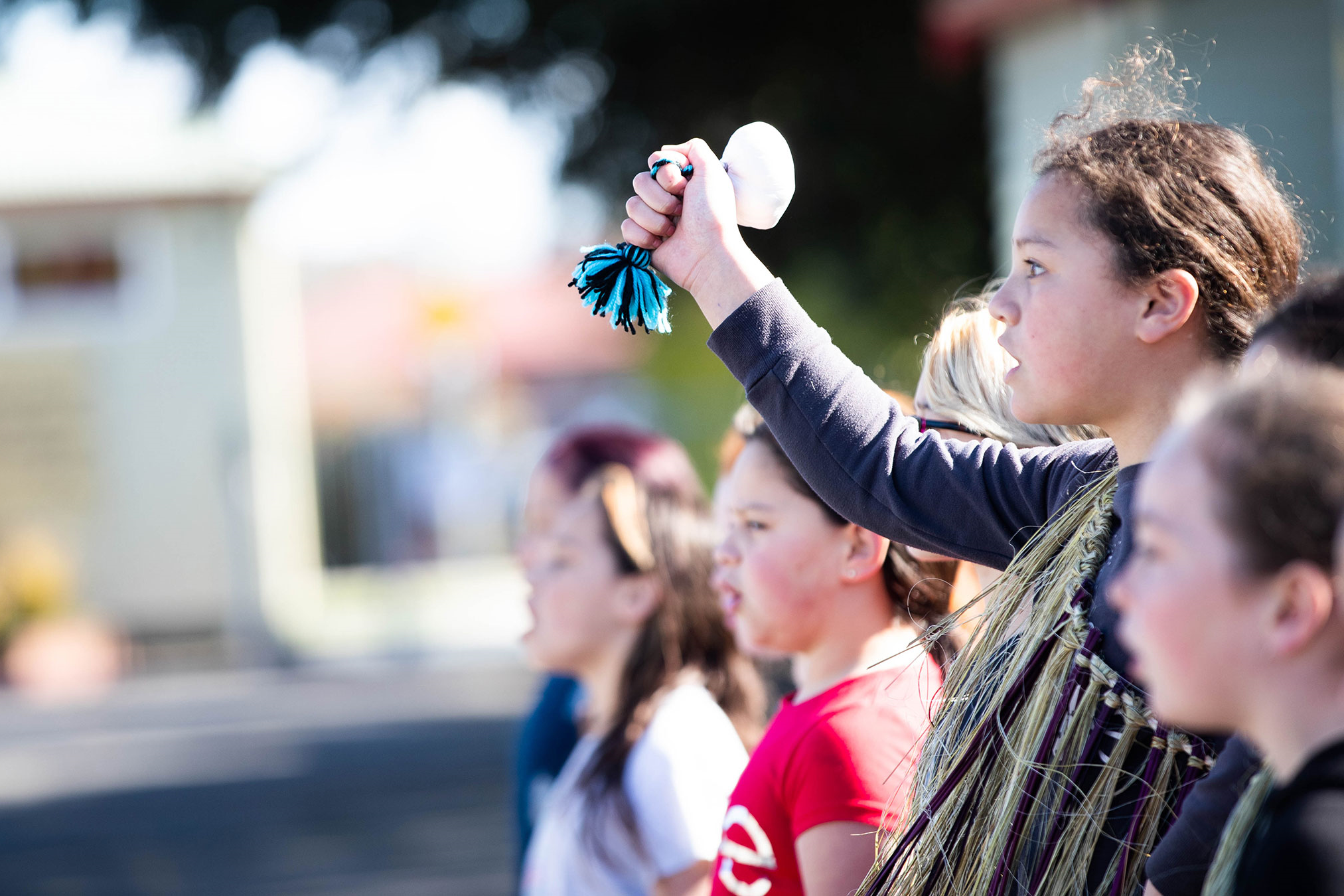Ngā mahi poi - Poi activities - Activity collection
This activity collection, "Ngā mahi poi – Poi activities", is part of the resource collection Te Ao Kori and gives an overview of he poi roa, tapatahi (single long poi), hē kanikani mā te poi (poi choreography), and the whakapapa and tikanga of poi.

About this resource
This teaching and planning activity collection explores he poi roa, tapatahi (single long poi), hē kanikani mā te poi (poi choreography), and the whakapapa and tikanga of poi.
Kaiako can adapt and develop activities from "Ngā mahi poi - Poi activities" (years 5-13), which are part of the resource collection, Te Ao Kori, to meet the identified learning needs of ākonga.
Ngā mahi poi - Poi activities: Activity collection
Include hapū, iwi, and tangata whenua
Techniques, tikanga, and popular waiata for poi vary between hapū and iwi. Acknowledging mana whenua and tikanga in your area can begin with conversations and partnerships with ākonga and whānau who bring expertise to the classroom. If you have no Māori whānau or hapū or iwi connections within your school, seek introductions to Māori communities through Kāhui Ako or school networks, or talk to the Strategic Advisor Māori at your regional Te Tāhuhu o te Mātauranga Ministry of Education office.
Whakapapa
Long, long ago, before time began, there was no light in the world, only darkness all around. This was the time of Io the creator, the guardian of the world.
In the quiet of the dark lay Ranginui, the Sky Father, holding the Earth Mother, Papatūānuku, tightly in his arms. Crushed between them in the darkness were their children, all longing for light, space, and freedom.
One of the children was Tāne Mahuta, the guardian and father of the forests. Tāne was big and strong. At last he could bear to be crowded no longer, and Tāne rose up between his parents and used his great strength to separate them. He thrust Ranginui high, high above Papatūānuku – making sky and earth. Light and air filled the great space between them.
Tāne Mahuta became the father of a great whānau. Two of his children were Harakeke (the flax), child of Pakoti, and Raupō (the native bulrush), who was the child of Repo (the swamp). Together, Harakeke and Raupō created Poi.
And that is how the first poi was made: from the strong leaves of the harakeke flax wrapped tenderly around the soft down of the native bulrush. Today, the poi is made of materials of our time, but the story of the poi and its beauty and grace still live on.
Copyright © The National Heart Foundation of New Zealand 1998.
Tikanga
The poi is practiced by both men and women. Poi encourages the wrists to become supple, increases dexterity in both arms, and improves agility. Traditionally, such skills were useful when using all Māori weaponry, including the taiaha. The poi was a common pastime and is actively practiced today, especially as part of competitive kapa haka performances.
Te reo Māori vocabulary
- Rere atu – fly away
- Rere mai – fly to me
- Rere runga – fly above
- Rere raro – fly below
- Poi kia mau – poi get ready
- Poipoitia – poi whirl and slap (as in spin and slap on your hand)
- Poi ki raro – poi stop and by your side
- Poi porotiti – poi spin
- Poi tapatapa – poi slap, slap (as in a rhythm or beat)




